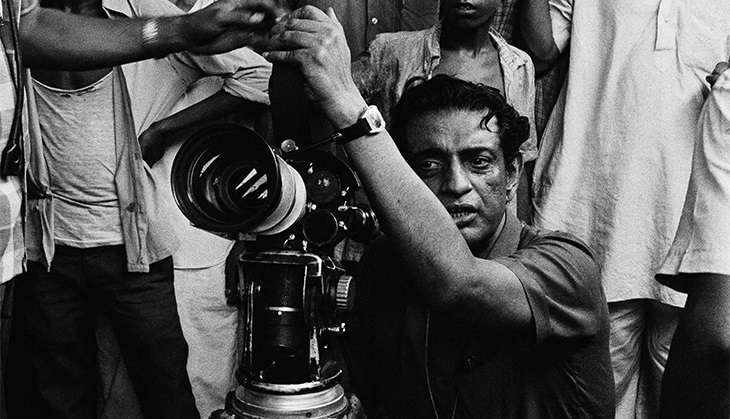A short film by Satyajit Ray and the process of preservation: learnings from IFFI 2016

Tessa Idlewine, a short film preservationist at the US Academy of Motion Picture Arts and Sciences, came to talk about the restoration of Satyajit Ray's films at the International Film Festival of India.
She talked about other interesting facets of restoration and the immense effort it takes just to restore a single film. She also talked about instilling the importance of film preservation and said that going forward, "we don't know the effect the digital medium will have on film archiving".
The session was titled 'Film Preservation at the Academy Film Archive: Satyajit Ray and More'.
Thanks to the Oscars, the Academy Film Archive has a large budget. Over the past twenty years, the Academy has preserved many great films, right from The Man With the Golden Arm to Night and the City.
Idlewine started off with facts and figures from the Academy. The Academy of Motion Picture Arts and Sciences was founded by 36 members in 1927 . The first Oscars took piece in 1929 .
The Margaret Herrick Library that was founded in 1928 holds photographs, screenplays and much more. The Student Academy Awards started in 1972 . Oral and Visual History Projects that was founded in 2012 is used to convey messages about filmmaking and preservation and has done a lot of work in restoration of interviews.
The Academy Film Archive only officially started in 1991. "When we started we were two lonely people huddled under the stairs. We didn't move into our own space until 2003 ,"Idlewine said. The collection holds not just Oscar nominated material but a number of documentaries, shorts, student films, home videos and others.

Revisiting Ray
One of the most interesting parts of the presentation was when Idlewine talked about restoration of legendary Indian director Satyajit Ray's works of which 27 have been restored so far. Ray is the only Indian filmmaker to receive an honourary Oscar from the Academy in 1992.
Idlewine played a clip of him receiving the award. Ray was unwell and couldn't come. He did speak from his hospital room in Calcutta.
"Sadly, he passed away just a few weeks later," she told the audience.
In December of 1992 , some members traveled to Calcutta to get a hold of the negatives of Ray's movies. A fire in 1993 at the Henderson Film Vault in London gutted six of Ray's films. All six were thought lost.
All the burn material were sent to the Academy vaults in Los Angeles where they were tucked away for 20 years. The films would have been pretty unusable had it not been for the team at L'Immagine Ritrovata in Bologna, Italy.
They hydrated the reels, repaired the splices, removed the glue and tape and wax and fixing the sprockets.
Along with the team at Criterion Collection, the Apu Trilogy and other Ray films have been painstakingly restored with a lot of determination.
Idlewine did show a short sixteen minute film by Ray, Two, that had less issues in restoration. It's a film about two kids trying to outdo each other. First with instruments and then with a bow and arrow versus a gun.
One of the main takeaways from the session was when Idlewine talked about finding a place for both digital and celluloid restoration to coexist.
Just to show some of of the other work the preservationists have done, Idlewine showed a 1963 short Pjanissimo. It's about a piano getting painted in various colours. When the director moved to upstate New York, he didn't wanna carry the piano with him. Instead he just smashed it with an axe.
Process of preservation
"It's a push straightforward process," Idlewine says. The first step of preserving a film is determining what format the film is in. What gauge it is on. The various gauges ranger from the 8mm to the 4. 35mm & 70mm - wide film.
The next step is determining what base the film is made out of. The different bases could be made of Nitrate - 1890-1950, Acetate - 1910-1980 or Polyester - 1990 s - present.
The next and final step is identifying if the material has any signs of decay. The first check is for colour fading, followed by mechanical damage and finally, shrinkage (which leads to a film not being able to run through a projector).
"If there are multiple versions or different sources then we go into it shot by shot to determine which is a better fit for archiving," Idlewine continues.
Priority in preservation
After film inspection, the Academy needs to prioritise which film gets preserved first, since they don't have unlimited funds and bodies. "Mostly we look at those that are Oscar nomination and those that are unique to our archive and those showing significant decay".
Idlewine says that they "constantly communicate and collaborate with other preservation people" in case of any duplicates or already restored works. The next step is sending the film to the film laboratory where the negative of the film is prepped and a new print taken from the negative. Finally the audio is digitally remastered in the audio laboratory.
First published: 23 November 2016, 11:54 IST






![BJP's Kapil Mishra recreates Shankar Mahadevan’s ‘Breathless’ song to highlight Delhi pollution [WATCH] BJP's Kapil Mishra recreates Shankar Mahadevan’s ‘Breathless’ song to highlight Delhi pollution [WATCH]](http://images.catchnews.com/upload/2022/11/03/kapil-mishra_240884_300x172.png)

![Anupam Kher shares pictures of his toned body on 67th birthday [MUST SEE] Anupam Kher shares pictures of his toned body on 67th birthday [MUST SEE]](http://images.catchnews.com/upload/2022/03/07/Anupam_kher_231145_300x172.jpg)






